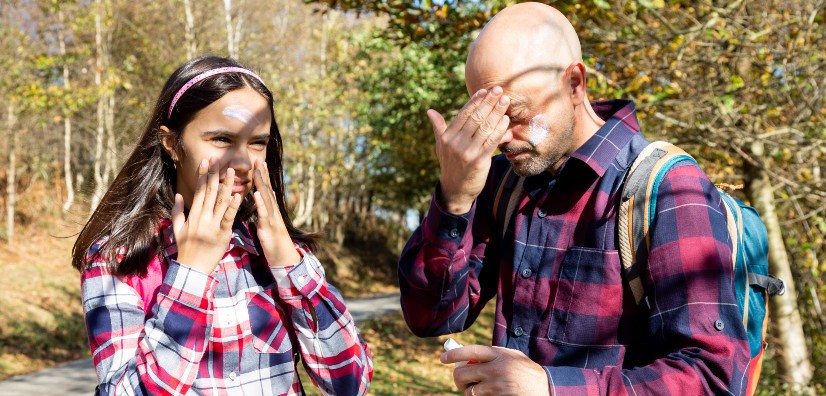To ensure you’re receiving the most up-to-date and accurate information, please choose the correct agency from the homepage. The DHEC website is no longer being updated and will be permanently unavailable Dec. 31, 2024.

Skin cancer can develop in unexpected places, including areas of the body that don't get much sun. Most skin cancers are curable, when detected early and most are preventable when you properly care for your skin. It is important to check your skin and look for new growths or changes in old ones.
Where on the Body Can Skin Cancer Hide?
- Scalp - Those with lighter colored, thinned hair are most susceptible to the damage of UV rays. Where you part your hair is an area of particular concern, as it is the most exposed to the sun. Hats are the best way to prevent skin damage to the scalp.
- Eyelids - Sunglasses are always a big help during the summer and on sunny days as your eyelids can be exposed to sun damage almost daily. When applying sunscreen, make sure to not miss your eyelids (with caution, of course).
- Palms and soles - Even though they do not typically see the sun, our palms and soles can show cancerous spots. Acral lentiginous melanoma is a rare, specific kind of skin cancer that form on your palms, soles, and nail beds—however, it is mostly common in people of color. Although there is no guaranteed way of preventing it, acral lentiginous melanoma is thought to be a result of past injury or genetics.
- Between your toes - Often a generally overlooked area, skin cancers can form in between our toes. Because they are so overlooked, the cancers can be more aggressive, and can grow deeper and larger if we are not aware of them. Make the effort to apply the sunscreen in between every toe to ensure they are as equally as protected as the rest of your feet.
- Fingernails and toenails - Nail beds can also harbor the second most common form of skin cancer - squamous cell carcinoma, a form of cancer that can appear as thick, red patches on the skin. Although usually not life-threatening, it can be very aggressive. Research shows the human papillomavirus (HPV) can cause squamous cell carcinoma. Practicing safe sex and taking other precautions like the HPV vaccine can prevent against any HPV related cancers. If you typically wear nail polish, it is also advised to check on your bare nails every once and awhile, just to ensure that they are healthy, and nothing is developing underneath the polish.
- Genitals - Squamous cell carcinomas can often appear near the genitals, especially if you have been exposed to HPV. Take similar precautions when it comes to your genitals: practicing safe sex, consider getting the HPV vaccine, and regularly conduct skin self-exams. You should also talk to your doctor if you have a history of melanoma in your family, as you’ll be sure to look for irregular spots when doing self-checkups.
The back is the most common location for melanoma.
Remember:
- One ounce of sunscreen, enough to fill a shot glass, is considered the amount needed to cover the exposed areas of the body.
- Sunscreen alone cannot fully protect you. In addition, seek shade and wear sun-protective clothing, including a wide-brimmed hat and sunglasses, whenever possible.
- Anyone can get skin cancer, regardless of skin color.